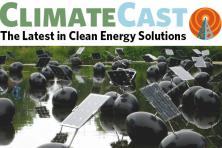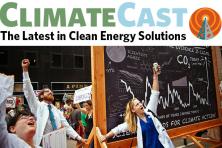Clean energy is the fuel of the future
Los Angeles may soon harness a piece of previous-generation energy infrastructure to make something new in the realm of clean energy. The Hoover Dam could be equipped with a solar and wind powered pump line that would regulate water flow and help manage electricity at times of peak demand. The project is part of California’s larger plan to transition off of coal-fired and nuclear power. In Washington State, voters will have the chance this fall to vote on Initiative 1631, a ballot measure that would place a fee on carbon emitted by big polluters and use proceeds to reinvest in a clean energy economy. Funds would help communities on the front lines of global warming, provide energy-assistance programs to low-income residents, safety protections for workers in fossil fuel industries, and more. This effort would be yet another component to solidify the west coast as a leader on climate. We’re already leading in many ways; for example, the West Coast Electric Highway is one of the longest routes where zero-emission road trips are possible. Charging stations are located every 25-50 miles all the way from Baja, California to British Columbia. Elsewhere in the American West, Denver just announced plans to transition the city to 100 percent clean energy by 2030.
The human toll of heat waves
A new study on the mental health impacts of extreme heat shows a startling result: unusually hot days cause suicide rates to rise. The study’s authors project that anywhere from 14,000 to 26,000 more people could die by suicide in the US by 2050 if we do not reduce greenhouse gas emissions. A warming world is already linked to other serious health risks, especially for workers whose jobs are performed mostly outside. More than 130 groups, including former heads of the US Occupational Safety and Health Administration (OSHA), have called for better protections for out-of-doors workers. Federal data shows that 69,000 workers were seriously injured from heat in the last quarter century, and nearly 800 workers died from heat exposure during that period. Student athletes are also at an increased risk for heat-related injury and death. According to the National Center for Catastrophic Sport Injury Research, an average of three football players die each year heat stroke -- a number that’s far too high when you consider that these deaths are preventable. In India, the summer heat is so intense that some project it may soon be literally unbearable for as many as 800 million people. In Japan, at least 77 people have died from heat-related illnesses since July 9, and more than 30,000 people were sent to hospitals for heat-related health issues. The Japanese Meteorological Agency is now recognizing heat as a natural disaster.
Wildfires rage in expected and unexpected places
At least 40 wildfires are burning in Sweden -- and 11 of them are inside the Arctic Circle. Some of the fires within the Arctic Circle are so large, they can be seen from space. In Greece, raging wildfires are wiping entire villages off the map. At least 84 people have died. Closer to home, Oregon’s Substation Fire, though now contained, left significant damage in its wake. 70,000 acres of wheat were burned, more than $5 million worth. Some farmers had their entire crop wiped out. Wildfires are so significant, that they’re destroying our air pollution gains. In fact, air quality in Southern Oregon is the worst in the nation right now -- and that’s directly related to wildfires burning in the area. It should come as no surprise that new data shows wildfires are getting bigger; even though the actual number of fires is 6.7 percent less than the 10-year average, fires have burned 4 percent more land. But don’t lose hope -- there are practical things we can do right now to lessen wildfire damage, like urging our cities to buy power lines underground.
The resource toll of heat waves
Record-breaking heat is stressing infrastructure just as much as its stressing local communities. In Texas, heat overwhelmed electricity grids as air conditioning use skyrocketed. But at least most people have air conditioning there! Seattle, the nation’s least air conditioned city, is experiencing one of its hottest Julys on record.
Summers are also getting significantly hotter in North America’s farm belt, which could have major implications for food sources. Many of the world’s crops are grown in this part of the country. A new NASA map shows that the average surface temperature on Earth for the first half of this year was the third hottest half-year on record, and that the heating trend is occurring all over the planet. As heat waves become the norm, it’s important to know how we can protect ourselves, and how cities can curb the urban heat island effect.
The latest Trump administration climate triumph...and setbacks
Do you remember in our previous issue when we reported on Scott Pruitt’s last laugh as EPA Administrator? On his very last day on job, Pruitt approved a loophole allowing for the manufacturing of more trucks that produce as much as 55 times the air pollution as trucks with modern emissions controls. Well, a federal appeals court has (at least temporarily) blocked this decision. Here’s hoping the court’s decision sticks.
In not-so-great news, site work has begun for an oil refinery about three miles from Theodore Roosevelt National Park in western North Dakota. The Trump administration also announced it will no longer require oil drillers, miners and related industries to compensate for damage caused to public lands. These moves are all part of Ryan Zinke’s larger plan to restructure the Department of the Interior. Much like Scott Pruitt did with the EPA, Zinke is cutting longtime staff and key departments, and appointing industry executives to oversee many of the industries they are meant to regulate.





